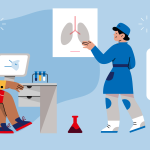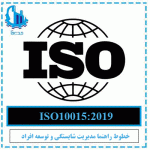Contact our experts at Modirfa to get free advice on planning and production management.
02188764867 – 02188761795
Iso14224:2016
Reliability indicators of maintenance maintenance
ISO 14224:2016 provides a comprehensive basis for collecting reliability and maintainability (RM) data in a standardized format for equipment in all installations throughout the operational life cycle of the equipment. It describes the principles of data collection and related terms and definitions that form a “reliability language” that can be useful for communicating operational experience. The failure modes defined in the normative part of this International Standard can be used as a reliability dictionary for various quantitative and qualitative applications. This International Standard also describes quality control and data assurance practices to provide guidance to the user.
When creating an ISO 14224 classification, it analyzes each piece of equipment for its location, related systems, and manufacturer’s design features. Then the types of equipment are classified and their performance is evaluated. In this step, we create a failure taxonomy that sorts each failure by mode, cause, and other data, allowing companies to avoid future incidents and understand the root cause of equipment failure.
Standardization of data collection practices facilitates the exchange of information between parties, e.g. Factories, owners, manufacturers and contractors. This International Standard specifies the requirements that any existing domestic or commercial RM data system must meet when designed for RM data exchange. Examples, guidelines, and principles for exchanging and integrating such RM data are discussed. This International Standard also provides a framework and guidelines for setting objectives and performance requirements for equipment reliability and availability performance.
Advantages of equipment and net data collection
There are several aspects of benefits that can be realized by properly collecting and analyzing quality data:
Economic
- cost-effective design to optimize capital costs;
- cost-effective operation to optimize operating costs;
- Improve profitability by reducing revenue loss.
General
- ability to operate (operating license);
- increasing the life of capital equipment;
- Product quality has improved.
Safety and environment
- improving personnel safety;
- reducing catastrophic failures;
- Reducing environmental impacts.
analytical
- improve decision-making;
- eligibility criteria;
- Better predictability
Benefits of implementing ISO 14224
Optimizing maintenance is much easier. Equipment that may be close to failure and in need of attention is easier to identify, repair, or replace.
Interchangeable spare parts records are also easier to maintain, allowing for better equipment procurement, service and workflow.
Search
Categories
- automobile industry
- change management
- Communication with the customer
- coronavirus
- data science
- Foodstuffs
- Industry 4
- Key indicators
- Laboratory
- Medical equipment industry
- News
- Organization excellence and design
- Process management
- Product certification
- Project Management
- Quality management
- Radio Modirfa
- risk management
- Safety and health
- Standard text and translation
- Strategy
- The field of strategy and excellence
- Uncategorized
The Latest Posts

SIs published interpretations of the IATF16949 standard

Health care management: Providing quality to the health industry

Translation of ISO10015:2019 standard text
Subscribe to the newsletter
Get all latest content delivered to your email a few times a month.

